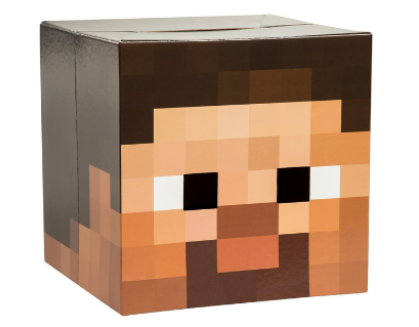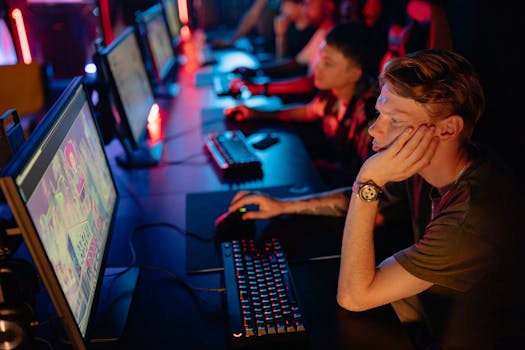Picture someone shouting in excitement at a glowing screen, hands gripping a controller. That moment of euphoria shows just how much has changed in the world of competitive gaming.
Esports isn’t a passing craze—it’s changed what it means to be a competitor, a fan, or a digital native. There are stadiums filled with energy and millions watching streams worldwide.
Dive in to discover the rules, communities, and events that made esports an international force. This guide explores exactly what creates that magnetic pull for so many people.
Player Passion Turns Into Global Stadium Events
The passion of gamers sparked home tournaments, but it didn’t take long for competitions to fill arenas. Suddenly, the roar of thousands replaced clacking keyboards in bedrooms.
Gaming events thrive on emotional highs. Fans wave banners, teams walk out under flashing lights, and players listen for that crucial cheer—like a home run at a baseball game except digital.
Amateur Tournaments Born in Living Rooms
Picture a group clustered around a living room TV: snacks, friendly taunts, and one screen. That’s where many future pros started, battling friends for pride more than prizes.
Local video game stores held weekend competitions. Winners left with bragging rights or small cash, and rivals became friends. Success here pushed competitors to seek bigger stages.
Copy this move: organize a small tournament—set prize rules, agree on a game, and use group chats to hype the event. Watch engagement soar as everyone roots for each other.
From City Venues to Packed Stadiums
Local events morphed into regional contests. When sponsors saw fans edging to watch finals, entire halls got reserved. Suddenly, competitors introduced themselves to roaring crowds and flashing spotlights.
League-run events like “Meet at the Mall” brought city communities together. One teen might say, “I’ve never felt energy like this outside of a concert.” Those memories built lifelong fandom.
Set up an event: Pick a venue, sell tickets online, and highlight local stars. Small touches—T-shirts, team banners—make even modest gatherings feel major league.
| Event Scale | Typical Venue | Audience Size | Takeaway Action |
|---|---|---|---|
| Living Room Tournament | Home/Garage | 5-10 | Gather friends, use fair rules, encourage fun |
| Local Game Store | Shop/Arcade | 20-50 | Create sign-ups, advertise prizes, print a bracket |
| Regional Convention | Convention Center | 100-1,000 | Contact sponsors, reserve space, recruit volunteers |
| National Finals | Arena | 5,000+ | Secure major sponsors, livestream event, sell merch |
| Global Championship | Stadium | 40,000+ | Coordinate worldwide, market to media, book entertainment |
Building Communities With Shared Rituals and Language
Strong esports culture isn’t written—it’s experienced in chatrooms, Discord guilds, and fan meetups. Rituals emerge naturally: players salute, cheer, and meme together after each big play.
Game-specific slang evolves at breakneck speed. For instance, new players soon pick up “GG” for “good game” and “tilt” for frustration. It’s a way to say “you’re in the tribe.”
Communication Drives Camaraderie
Clans, teams, or even new acquaintances rally with phrases or inside jokes. You’ll hear, “Nice clutch!” or “Let’s scrim again tomorrow.” These blur national boundaries—passion wins, no matter the accent.
Typed emotes and quick responses build trust in high-pressure matches. “Good luck” in the pre-game chat signals respect and encourages cleaner, more enjoyable contests, no matter each person’s location.
- Host daily scrimmages to create shared memories; teams bond over repeated matches. Rotate who leads voice chat; it boosts confidence and gives everyone a turn to shape the team’s tone.
- Invent or adopt unique callouts for your squad—”blue stairs,” “ninja hill.” The custom lingo speeds reactions, turning teams into tight units even when under pressure late at night.
- Set aside a post-match moment—share highlights, laugh at mistakes, and swap memes. It turns fleeting games into ongoing traditions that keep players coming back for more.
- Reward positive chat behavior; shout out sportsmanship. Typing “well played” after a loss creates allies, not enemies, and grows your reputation in the community.
- Encourage new members by explaining rituals and etiquette. A welcoming atmosphere helps groups last for years—beyond wins and losses, that’s the true legacy of strong esports circles.
Small efforts make communities last. Start by posting tips for beginners, or responding to chat with patience. That seeds a culture that makes your group stand out.
Symbolic Moments Boost Team Identity
Teams pick jerseys, mascots, or inside jokes. Rituals—like flashing an emote at game start or logging a motivational catchphrase—create identity. Players mimic pro celebrations to cement a legacy.
Let team members design a logo or choose a victory dance. That keeps everyone invested and gives fans a rallying image. Even losing feels less tough with those symbols.
- Create a team-only intro ritual before games; it could be a chant or inside joke. Fans who join Discord can use it, too, building loyalty beyond the core squad.
- Rotate playlist control so everyone brings their musical taste to warm-ups. Shared rituals—like group poses after a win—build emotional ties. These go far beyond in-game stats.
- Celebrate anniversaries with custom memes or highlight montages. It’s how teams remember every last-second save or comeback, making magic out of everyday play.
- Host annual “team dinner” in voice chat to relive the year’s best moments. Picking snacks or sharing stories makes virtual bonds feel real and lasting.
- Remind your squad to keep lore alive—share origin stories with every new recruit. As pro teams have proven, history sparks loyalty as sure as high scores.
Pride grows from shared customs. Start by organizing a quick poll about the next team tradition and see everyone light up.
Streaming and Sharing Break Down Barriers
Streaming changed everything by giving instant access to behind-the-scenes action. A single click connects fans with pro players and emerging talents.
Players greet viewers live, skip the cover of polished highlight reels, and share mistakes as well as triumphs. It’s raw, unfiltered, and feels more like a gathering than a staged broadcast.
Twitch and YouTube as Social Hubs
Streams serve as digital hangouts. “What’s up chat?” or “I’ll try it again for the followers” pepper conversations just like with friends at a party.
Real-time feedback shapes playstyle: when viewers type “try a risky strat,” streamers actually respond, adapting mid-game. No need to wait for next year’s magazine—learning is instant and communal.
Every “Let’s go!” from viewers fuels the energy. Whether it’s a first-timer trying out a speedrun or a pro high-fiving the camera, streamers invite everyone to join their journey.
Clips Go Viral and Connect the World
A jaw-dropping moment—like an impossible comeback—gets clipped and shared. Suddenly, a moment from South Korea ends up inspiring a kid in Nebraska overnight. Viral content unites people across borders instantly.
Clips come with their own reactions: “Did you see that play?!” kicks off group chats and sometimes even news coverage the next day. Fans relive the drama together, keeping big plays alive for weeks.
Sharing these snippets builds legends. Even fans who don’t play the games start to recognize players’ names, making heroes out of everyday competitors.
Geography, Access, and Structural Growth
Global growth isn’t just “happening”—it’s built on infrastructure, reliable access, and the willingness of organizations to host international events. Geography can determine whether players train at home or join clubs.
In countries with fiber internet and modern PC cafes, kids pick up esports early. Compare this with regions where access is limited, and you’ll see why online versus in-person events look so different.
| Region | Access Mode | Most Popular Game Types |
|---|---|---|
| South Korea | PC cafes, high-speed internet | MOBA, RTS |
| North America | Home consoles, online | FPS, Battle Royale |
| Western Europe | School clubs, home networks | MOBA, FPS |
This table shows why some regions breed world-class professionals, while others stand out for vibrant fan bases and creative streamers. Abundant resources accelerate skill—but infectious passion keeps everyone included.
Brand Investment Fuels Professionalism and Big Prizes
When big brands noticed millions tuning in, sponsorship ramped up fast. Suddenly, gaming tournaments offered six-figure prizes rivaling traditional sports. It’s like backyard baseball getting major-league investment overnight.
Professional teams now have PR managers, nutritionists, and even travel coordinators. Major deals mean players can focus on training, not just side hustles or college.
Even mid-level tournaments get branded jerseys and flashy graphics packages. Small teams sometimes leap to global contention thanks to a smart partnership with a hardware company or energy drink sponsor.
Realistic example: a company might say “We’ll cover travel if you qualify for top eight”—letting young talent see the world for the first time. This motivates more competitors to test their skills online, then offline, where it counts.
Think of esports now as a track meet where everyone’s running in branded shoes, and each finish line opens up a new sponsorship door. This supports both superstar players and plucky newcomers alike.
Key Patterns Every Successful Team Follows
- Hold structured daily practice—set goals and review feedback to track progress.
- Foster open communication for accurate callouts, feedback, and strategic brainstorming, keeping ego out.
- Rotate leadership so everyone builds confidence and sharing ownership improves adaptability during key rounds.
- Analyze competitive replays—review with the team and take notes on new strategies, drawing lessons for improvement.
- Prioritize health—schedule rest, exercise, and screen breaks for clear thinking during long competitions.
- Organize team bonding outside the game—watch a movie, share a meal over Discord, or design custom icons together.
Following these routines makes every team resilient. Shared ownership and feedback loops drive commitment over quick wins. Health and off-screen connection matter as much as game mechanics.
Teams that add variety—analytical, physical, and social—defuse burnout and build mutual respect. You might rotate roles each week to discover hidden clutch players when the stakes get high.
Future Moves: What Esports Tells Us About Culture
Esports isn’t just a hobby or a spectacle—it reveals what drives connection and creative expression in modern life. The digital arena mirrors playground rules: cheer, support, compete, and share in the aftermath.
Pride, nostalgia, and adrenaline blend to form a world where a quiet person on the fringe can become a celebrated hero overnight. It’s a culture powered by immediacy, flexibility, and the urge to belong somewhere memorable—and public.
We can see tomorrow’s digital habits already emerging in esports: fast collaboration, learning in real time, and merging entertainment with deep friendship. Pro players set examples, but fans and amateurs drive the story equally.
So watch a match, join a chat, or host a mini-event. Esports shows us how shared digital rituals can turn any group—no matter how far apart—into a true community with real-world impact.

